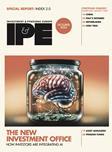Something old, something new

Some years back the Bank of Ireland set itself the challenge of creating a new pension scheme providing a more homogenous investment approach for employees across the whole group. Nina Röhrbein spoke to the bank’s head of pensions, Michelle Roche, to learn more about this young scheme’s progress ...
You have now reached your article limit
Already a registered user or member? Sign in here
To continue reading, register free today for access
Registration also includes access to

Five reasons to register today
- Access to IPE articles from our award-winning editorial team
- Unique IPE market data, rankings and tables
- In-depth interviews with pension fund leaders
- Extensive coverage of latest asset class trends
- Comprehensive archive of data, research and intelligence






